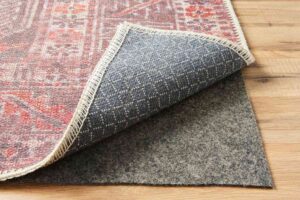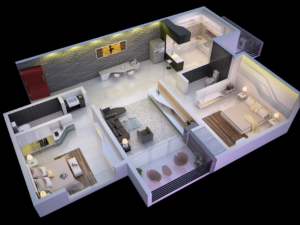
Taming the Unruly: How to Keep a Rug from Moving on Carpet
Introduction
Rugs are a fantastic way to add warmth and style to a room, but there’s one common frustration that many homeowners face – the incessant movement of rugs on carpeted floors. A rug that slips and slides not only looks untidy but also poses safety risks. Fear not, as we embark on a journey to discover effective strategies on how to keep a rug from moving on carpet. From simple DIY fixes to specialized rug accessories, we’ll explore a variety of solutions to help you maintain a well-positioned and secure rug.
Section 1: Understanding the Challenge
1.1 The Rug on Carpet Dilemma
Carpeted floors provide a comfortable and plush surface, but they can pose challenges when it comes to keeping rugs in place. The smooth texture of both the carpet and the rug often leads to unwanted slipping and sliding, creating a constant need for readjustment.
1.2 Safety Concerns
Beyond the aesthetic aspect, a moving rug can pose safety hazards, especially in high-traffic areas. Slips and trips are more likely to occur when a rug doesn’t stay firmly in place, making it essential to find effective solutions.
Section 2: DIY Solutions
2.1 Rug Gripper or Carpet Tape
Investing in rug grippers or carpet tape is one of the most straightforward solutions. These adhesive materials adhere to the underside of the rug, providing traction against the carpet. Ensure the gripper or tape is appropriate for both the rug and carpet materials.
2.2 Velcro Strips
Using Velcro strips is a creative and customizable solution. Attach one side of the Velcro strip to the rug’s underside and the corresponding side to the carpet. This allows for easy removal and repositioning of the rug while keeping it securely anchored.
2.3 Silicone Caulk
Apply lines of silicone caulk on the back of the rug, allowing it to dry thoroughly. The slightly tacky texture created by the caulk helps grip the carpet, preventing unwanted movement. Ensure the caulk is compatible with both the rug and carpet materials.
2.4 Rug Corners Weighted with Heavy Objects
Placing heavy objects, such as furniture or decorative items, on the corners of the rug can help keep it in place. This method is particularly useful for smaller rugs where the weight of furniture is sufficient to prevent movement.
3: Specialized Rug Accessories
3.1 Rug Pads with Non-Slip Backing
Investing in rug pads specifically designed for use on carpeted floors is a reliable solution. These pads usually have a non-slip backing that grips both the rug and carpet, providing stability without damaging the flooring.
3.2 Double-Sided Carpet Tape
Double-sided carpet tape is a versatile option that works well for securing rugs. Apply the tape to both the rug and the carpet, creating a strong bond that minimizes movement. Ensure the tape is suitable for use on both surfaces.
3.3 Non-Slip Rug Underlay
Non-slip rug underlay is a practical accessory designed to prevent rugs from slipping on various floor surfaces, including carpet. Cut the underlay to fit the size of the rug and place it beneath for enhanced grip.
3.4 Rug Anchors or Clips
Rug anchors or clips are specialized tools designed to secure rugs on carpet. These devices typically feature clips that attach to the corners of the rug, anchoring it in place. Adjustability and ease of use make them a popular choice.
4: Prevention Strategies
4.1 Proper Rug Size
Choosing a rug that fits the dimensions of the seating area or the room helps minimize movement. A properly sized rug is less likely to shift and provides a cohesive look to the overall space.
4.2 Low-Pile Rugs
Opting for low-pile rugs, which have shorter and denser fibers, can reduce the likelihood of slipping. Low-pile rugs have a flatter profile that adheres more securely to carpeted surfaces.
4.3 Regular Cleaning
Dirt and debris under a rug can create a slippery surface. Regularly clean both the rug and carpet to ensure a clean and secure connection. Vacuuming and spot cleaning are essential maintenance steps.
Frequently Asked Questions
1: Can I use rug grippers on all types of rugs?
Rug grippers are suitable for most rugs, but it’s essential to check the manufacturer’s recommendations. Some delicate or antique rugs may require gentler solutions to avoid damage.
2: Will adhesive solutions damage my carpet or rug?
When used correctly, adhesive solutions like rug grippers, carpet tape, and Velcro strips should not damage carpets or rugs. Always follow the product instructions and test in an inconspicuous area first.
3: How often should I replace double-sided carpet tape?
The lifespan of double-sided carpet tape varies, but it may need replacement if it loses its adhesive properties or leaves residue on the rug or carpet. Follow the manufacturer’s guidelines for durability.
4: Can I use rug pads meant for hard floors on carpeted surfaces?
While rug pads designed for hard floors may offer some grip on carpet, it’s best to use rug pads specifically intended for carpeted floors. These pads often have a non-slip backing suitable for carpeted surfaces.
5: Are rug anchors or clips visible on the rug’s surface?
Rug anchors or clips are typically discreet and placed on the underside of the rug, so they are not visible on the surface. They provide effective anchoring without compromising the rug’s appearance.
6: Will rug underlay work on high-pile rugs?
Rug underlay is more effective on low-pile rugs due to the flatter surface. However, choosing a thicker and denser underlay may provide some grip for high-pile rugs.
7: Can I use silicone caulk on all types of rugs?
Silicone caulk is suitable for most rugs, but it’s essential to test a small, inconspicuous area first to ensure compatibility. Avoid using caulk on delicate or antique rugs that may be sensitive to adhesives.
8: Are there specific rug accessories for outdoor carpets?
For outdoor carpets, consider using weather-resistant rug pads or specialized rug anchors designed for outdoor use. These accessories are built to withstand exposure to the elements.
9: Can heavy furniture alone prevent a rug from moving?
While heavy furniture can provide some anchoring, it may not be sufficient for larger or frequently moved rugs. Combining furniture weight with other anchoring methods ensures a more secure hold.
10: How do I clean rug pads or underlay?
Cleaning rug pads or underlay depends on the material. Many can be spot-cleaned with mild detergent and water. Refer to the manufacturer’s care instructions for specific guidance.
Conclusion
Keeping a rug from moving on carpet involves a combination of strategic solutions, from DIY fixes to specialized rug accessories. Whether you choose adhesive options, rug pads, or weighted corners, the key is to address the issue promptly to enhance both the aesthetic and safety of your living space. By understanding the factors that contribute to rug movement and implementing effective prevention strategies, you can enjoy a well-anchored rug that complements your home’s style while providing a secure and comfortable environment for all.


